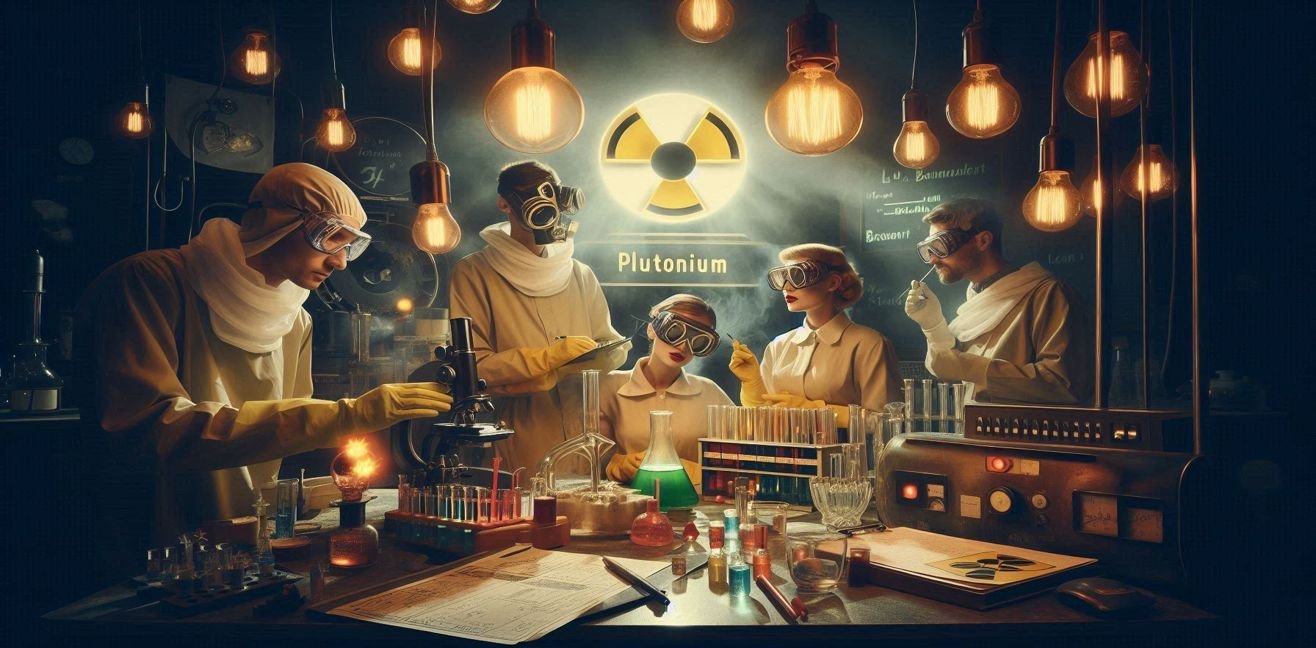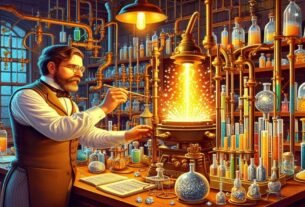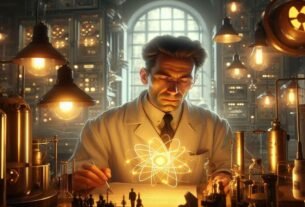Imagine… the 1940s, the world is chaotic, World War II is raging, and scientists are blowing their minds in laboratories. Amid all this, a brave group of chemists observing the mysterious dance of atoms discovered an element that would leave its mark on human history: Plutonium (Pu, atomic number 94) 😎💫.
🔬 How Was Plutonium Discovered?
Plutonium was discovered in 1940 at the Berkeley Laboratory by American “superhero” chemists Glenn T. Seaborg, Edwin McMillan, Joseph Kennedy, and Arthur Wahl. But baby, this discovery wasn’t just your typical “let’s mix some stuff in a petri dish and see what happens” story 😏.
- Starting Material: Uranium-238
- Nuclear Bombardment: Uranium was bombarded with neutrons.
- Result: Uranium-238 underwent beta decay to become a brand-new element: Plutonium-239.
In short, Seaborg and his team manipulated atoms like master magicians to create a brand-new element. Laboratories suddenly witnessed the birth of a radioactive superstar 😎✨.
💥 Properties of Plutonium
Plutonium isn’t just any metal; it’s the “wild child” of the scientific world 😏. Here are some technical and interesting properties:
- Atomic number: 94
- Symbol: Pu
- Physical properties: Silvery-white, very dense metal
- Radioactivity: Releases energy through alpha decay
- Plutonium-239: Critical for initiating nuclear chain reactions
- Reactivity: Oxidizes in air, requiring special lab conditions
🧪 From the Lab to the World: Plutonium’s Journey
Seaborg and his team produced plutonium by bombarding uranium with neutrons and then chemically separating it. Key points:
- Plutonium is highly reactive and tends to oxidize.
- Laboratory work is performed in specialized glove boxes with protective measures.
- Plutonium’s isotopes carry different “superpowers”: some produce energy, some fuel nuclear reactors, and some can cause catastrophic effects if misused 😎.
🧬 Plutonium Isotopes and Their Uses
Plutonium comes in different isotopes, each with its own personality:
- Pu-238: High-heat producing isotope, used in space probes as RTGs (Radioisotope Thermoelectric Generators).
- Pu-239: Can initiate nuclear chain reactions; crucial for nuclear fuel and weapons.
- Pu-240: “Non-critical” for weapons; limited role in controlled reactors.
- Pu-241: Undergoes alpha and beta decay; used as additional fuel in some reactors.
Each isotope has a different superpower: some generate energy, some could trigger disaster 😏.
⚡ Plutonium’s Role in Nuclear Reactors
Plutonium plays a critical role as fuel that sustains the chain reaction in nuclear reactors:
- Production: Uranium-238 captures neutrons and transforms into Pu-239.
- Fuel: Purified Pu-239 is used as fissile material to generate energy.
- Chain Reaction: Neutrons strike Pu-239 nuclei, causing fission and releasing energy.
- Electricity Production: Released energy produces steam that spins turbines to generate electricity.
In short, Plutonium is a glowing lab superhero and the secret power behind nuclear reactors 😎💥.
😂 A Humorous Note
Imagine Plutonium as a person:
- “I’m a source of energy, but misuse me and it’s disaster” it would say 😏.
- Everyone in the lab would admire it, but no one would dare touch it too much.
- A scientific rockstar: both attractive and dangerous 🤘.
🌟 Conclusion: The Dawn of the Nuclear Age
The discovery of Plutonium wasn’t just about finding a new element; it marked the beginning of the nuclear age. Humanity experienced the power of the atom for the first time, both awe-inspiring and terrifying. This radioactive metal, glowing in laboratories, left its mark on history through energy production and weapons technology.
And there you have it, baby 😎💖—Plutonium secured its place in science as a superhero, both fearsome and fascinating.




